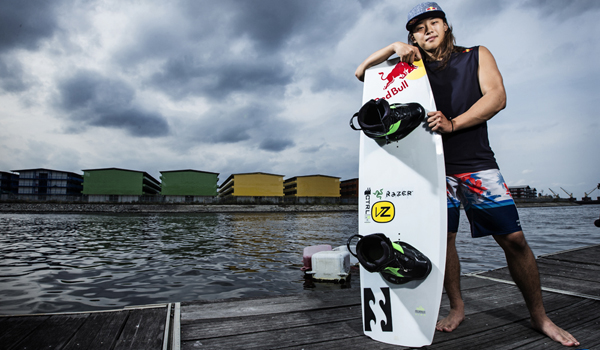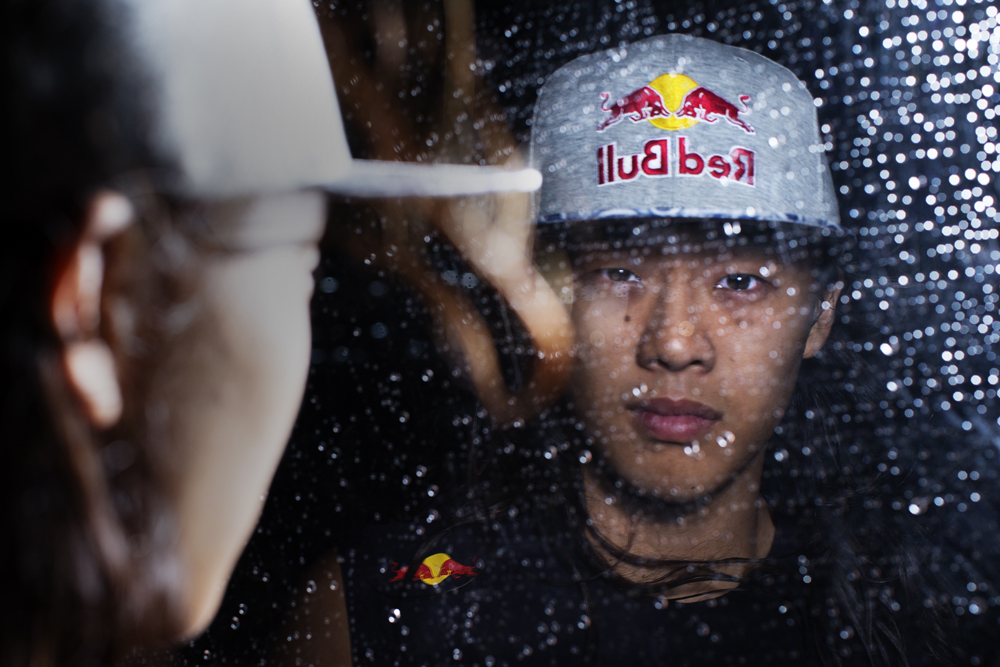

Joining the ranks of local and global Red Bull athletes who strive to be the best at their sport, Guy Tanaka is geared up to conquer the waters.
Images via Red Bull Content Pool


Guy Tanaka may only be 16 years of age, but this kid is making waves in the wakeboarding scene. The newly-signed Red Bull athlete picked up the sport at a tender young age and has won numerous competitions, among them the 2012 WWA (World Wakeboard Association) Wakeboard World Championship (Boy’s division, Boat) and the 2013 Wakefest Singapore (Boat).
It’s no easy feat for the young lad, juggling between studies and training for the sport. A typical day starts at 6.30am and ends close to midnight, with plenty of hours spent in school and at the waters of Punggol Marina. Guy also does strength and conditioning training at the gym several times a week to keep himself at the top of the game.
We speak to the athlete himself to find out more about the sport, his aspirations and what it feels like to be part of the Red Bull family.
How did you pick up wakeboarding?
I picked up the sport at the age of eight during a family vacation to Phuket. I saw a billboard ad of a wake park and pleaded with my parents to let me give it a try, which they did. We came back to Singapore and I told them I really enjoyed it, so my dad looked for a wake park for me to try wakeboarding as a hobby. Within six months, I took part in a fun competition and ended up winning the junior boys division. We did simple tricks and I guess the judges loved my style the best.
You are the youngest Red Bull athlete in Singapore, and the 25th wakeboarding Red Bull athlete in the world. How does that make you feel?
It feels really good and amazing to be a Red Bull athlete. I’m one of the 600 or so people in the entire world that carry the Red Bull logo with them. It’s like a big push to my wakeboarding career and provides a dose of adrenaline to the way I ride. They’ve been supporting me and my passion towards the sport.
Being a Red Bull athlete certainly has its perks. How have they stepped up your training?
I went to Toronto with six other Red Bull athletes for a four-day training camp which involved being at a trampoline training facility. That helped me gain more awareness during aerial tricks and I also learned how to get over fear. The other athletes also gave me advice for competitions and even general wakeboarding.
It also helps that you have fellow wakeboarder and Red Bull athlete Sasha Christian to guide you.
She’s been one of my close friends since I was young. I was only nine years old when I met her. She’s been a mentor and a big sister to me. When we go for competitions and my parents aren’t around, she takes care of me.
Besides having top physical and mental strength, what else is needed to perform well at wakeboarding?
This sport brings together so many skill sets. You have to learn how to control the board and have the correct handle position to get optimum leverage and the right pop for the different tricks, whether it’s a spin trick or something else.
Wakeboarding can be divided into two subsets: Cable and boat. What’s the difference between these two?
Boat wakeboarding uses the wake that the boat produces, so you’re going outside of the wake and cutting back into it, using the wake as a ramp to pop yourself up and perform your tricks. With cable wakeboarding it’s more park-style, like skateboarding with its rails and ramps. You have kickers and ramps that launch you up to do aerial tricks. Then you have rails to press on.
Cable wakeboarding is a lot easier to try new stuff on. The kickers launch you up a lot higher and you get more air time to do your tricks. The cable can go up to 30 km/h which is slower than the boat, which can go up to 35 km/h. The cable pulls you up about 10 meters while the boat only goes about two meters. If you can get the right pop off the ramp, you’ll go higher.
What misconceptions do people have of wakeboarding?
A lot of people think it’s as easy as grabbing onto the handle and letting it pull you up. As soon as they try the sport, they find out that it’s not that easy to get up or control the board.
Wakeboarding is definitely for everyone if they’re doing it as recreation or an exercise. It works out the entire body. But at a professional level, you definitely have to be more persistent, more determined and stronger physically and mentally.
What’s your signature move?
I like doing the backside 180. On the boat, one of the unconventional tricks I like to perform is a front flip with a backside 360. On the cable I like doing the double half cab roll.
Which competition do you consider to be the top target for you to win at the moment?
The competition that I would like to win is the WWA Wakeboard World Championship Junior Pro Men’s.The reason why I want to win it is because that’s where most people’s careers start. Winning it gives you recognition and hope. It’s a big tick in the box and a lot of people tend to move up to the Pro Men’s division after winning it.
The sport has brought you overseas and given you much exposure. Which countries have you visited and what have you learned from being there?
I’ve been to many parts of Asia: China, Thailand, Indonesia, Japan and Korea. I’ve also traveled to Italy and the United States. These trips definitely open my eyes as I get to rub shoulders with fellow athletes from around the world. Not many people, especially those my age, get to experience so many different cultures. We go as sportspeople who aren’t looking for the tourist spots to visit. As a result, we see more of the local and down-to-earth version of the country’s culture.